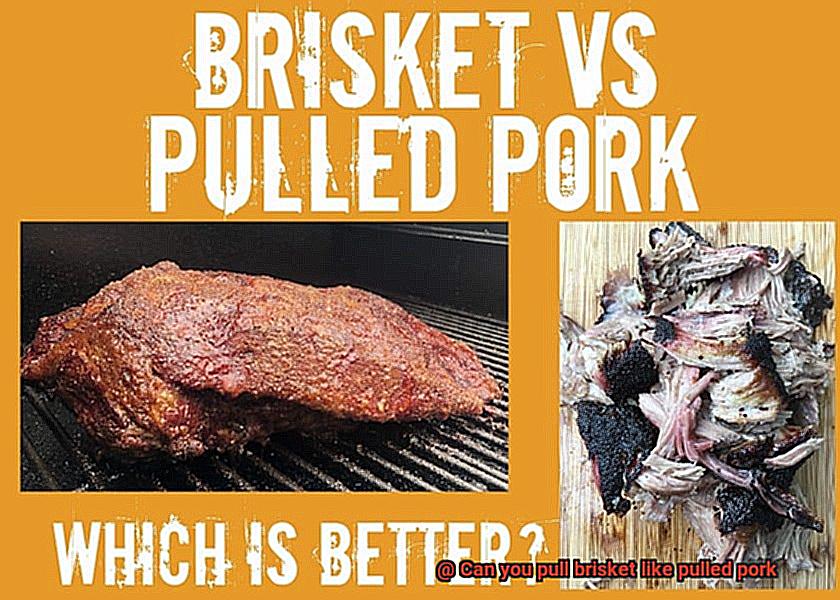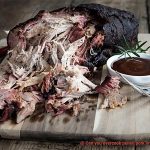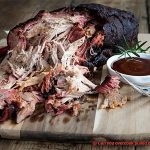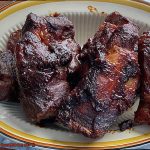Welcome to the smokin’ world of barbeque, where the tantalizing scents and tender meats rule supreme. If you’ve ever sunk your teeth into some lip-smacking pulled pork or relished the juicy slices of brisket, chances are you’ve pondered this burning question: Can you pull brisket like pulled pork? Well, get ready for a finger-lickin’ adventure as we unravel the differences between these two beloved barbeque legends.
Pulled pork, with its succulent shreds of meat dripping in tangy goodness, has long been hailed as the undisputed king of barbeque. Its slow-cooked perfection and saucy allure have won hearts far and wide. But then there’s brisket – the heavyweight champion of Texas barbeque – renowned for its smoky flavor and melt-in-your-mouth tenderness. Can this beefy behemoth ever reach the same level of textural glory as pulled pork?
In this epic exploration, we’ll dive headfirst into the intricate details that set these bbq wonders apart. From the cuts of meat to the cooking techniques and mouthwatering flavors, we’ll uncover the secrets behind each dish’s distinct charm. So grab yourself a napkin (or three) and prepare your taste buds for an unforgettable showdown. It’s time to settle once and for all: Can you pull brisket like pulled pork? Let’s fire up those grills and find out.
Contents
What is Brisket?
Brisket, a tantalizing cut of beef that originates from the lower chest of a cow, is a true griller’s delight. Renowned for its robust flavor and melt-in-your-mouth tenderness when prepared with finesse, brisket has become an iconic symbol of barbecue, especially in the heart of Texas. While pulled pork may reign supreme in the world of barbecue, don’t underestimate the savory allure of pulled brisket. In this article, we will delve into the art of pulling brisket, providing you with expert tips and techniques to achieve unparalleled mouthwatering results.
Discovering the Anatomy of Brisket:
- Brisket is comprised of two distinct muscles: the lean flat and the marbled point.
- The point boasts an abundance of succulent fat, resulting in unparalleled flavor, while the flat offers a leaner but equally delectable experience.
- Slow-cooking is key to breaking down tough connective tissues and rendering fat, which ultimately yields tender and succulent meat.
Unveiling the Distinctions: Brisket vs. Pulled Pork:
- Although both are beloved barbecue dishes, they differ in terms of cut and cooking techniques.
- Brisket possesses lower fat content, necessitating slight adjustments in approach to achieve optimal texture.
Techniques for Perfecting Pulled Brisket:
- Cook the brisket until it reaches an internal temperature between 200-205°F (93-96°C) for complete collagen breakdown.
- Employ the “Texas crutch” method by wrapping the brisket tightly in foil or butcher paper to retain moisture and promote tenderness.
- Allowing the cooked brisket to rest enables juices to redistribute within the meat, intensifying its flavors.
Shredding Brilliance: Achieving Optimal Texture:
- Utilize forks or bear claws to expertly shred the brisket into delectable, bite-sized pieces.
- While not as effortlessly tender as pulled pork, mastering the proper cooking techniques ensures a tantalizingly tender result.
- Enhance both flavor and juiciness by incorporating mouthwatering barbecue sauce or marinades.
The Joy of Experimentation and Personalization:
- Embark on a culinary adventure by exploring diverse cooking methods, seasonings, and sauces to create your signature pulled brisket.
- Embrace the distinctive flavors and textures that only brisket can bring to your barbecue table.

What is Pulled Pork?
Pulled pork is a beloved American dish that takes barbecue to a whole new level. This smoky and tender delicacy has captured the hearts – and taste buds – of food enthusiasts across the country. Hailing from the Southern states, pulled pork has become an iconic staple of regional cuisine.
At the heart of this dish is the meat itself. Pulled pork is typically made from the shoulder or butt cuts of pork. These cuts are chosen for their high fat content, which not only keeps the meat moist during the long cooking process but also infuses it with a rich and indulgent flavor. The result is succulent and melt-in-your-mouth goodness that is hard to resist.
To achieve its mouthwatering tenderness, pulled pork requires slow and low cooking. Whether it’s smoked or slow-roasted, the meat is cooked at a low temperature for several hours. This gentle heat breaks down the tough connective tissues in the meat, transforming it into tender shreds or chunks that practically fall apart at the touch of a fork.
But the magic doesn’t stop there. Before it hits the grill, pulled pork gets dressed up in a delightful dry rub or marinade. This step adds an extra layer of flavor and complexity to the meat, making every bite a burst of deliciousness.
Once your pulled pork masterpiece is perfectly cooked and seasoned, it’s time to savor it in all its glory. While traditionalists enjoy it on a soft bun as a sandwich, there are countless ways to enjoy this versatile dish. From tacos to nachos, quesadillas to pizza toppings, you can let your creativity run wild with pulled pork.
To complete the flavor profile, top your pulled pork creation with your favorite barbecue sauce and serve it alongside some creamy coleslaw for that perfect balance of sweet, tangy, and crunchy goodness.
Difference between Brisket and Pulled Pork
The debate between brisket and pulled pork has long raged among barbecue enthusiasts. These two mouthwatering meats each bring their own unique flavors and characteristics to the table, making them beloved choices for grillmasters and food lovers alike. In this article, we’ll explore the differences between these barbecue titans and help you decide which one to choose for your next cookout.
Cut of Meat:
Brisket, sourced from the lower chest or breast of the cow, is a beef lover’s dream. Its rich marbling and high fat content make it ideal for low and slow cooking methods. Pulled pork, on the other hand, hails from the upper shoulder of the pig, specifically the pork shoulder or pork butt. This well-marbled cut contains ample connective tissue, perfect for achieving succulence through slow cooking.
Cooking Techniques:
Brisket is a labor of love that demands patience and skill. It is typically cooked low and slow over indirect heat, allowing the fat to render slowly while tenderizing tough meat fibers. Pulled pork follows a similar technique but at slightly higher temperatures. The goal is to reach an internal temperature of around 195°F (90°C), ensuring that the meat falls apart effortlessly.
Flavor Profile:
Brisket offers a robust, beefy flavor elevated by smoky undertones from the cooking process. The fat content adds richness and moisture, resulting in a melt-in-your-mouth experience. Pulled pork boasts a slightly milder flavor profile, absorbing flavors from rubs or marinades during cooking to achieve a savory and juicy end product.
Texture:
Brisket delivers a firm yet tender texture when cooked properly, with thin slices that offer a satisfying chew when sliced against the grain. Pulled pork lives up to its name with its shredded or pulled texture. The slow cooking process produces incredibly tender meat that can be effortlessly torn into succulent strands.
Serving Styles:
Brisket often takes center stage on the plate, sliced thinly and enjoyed on its own or incorporated into various dishes. It can star in sandwiches, tacos, or even top salads. Pulled pork, on the other hand, is typically shredded or pulled apart using forks or claws. It is commonly served on buns with barbecue sauce or used as a versatile filling for tacos, burritos, or even pizza.
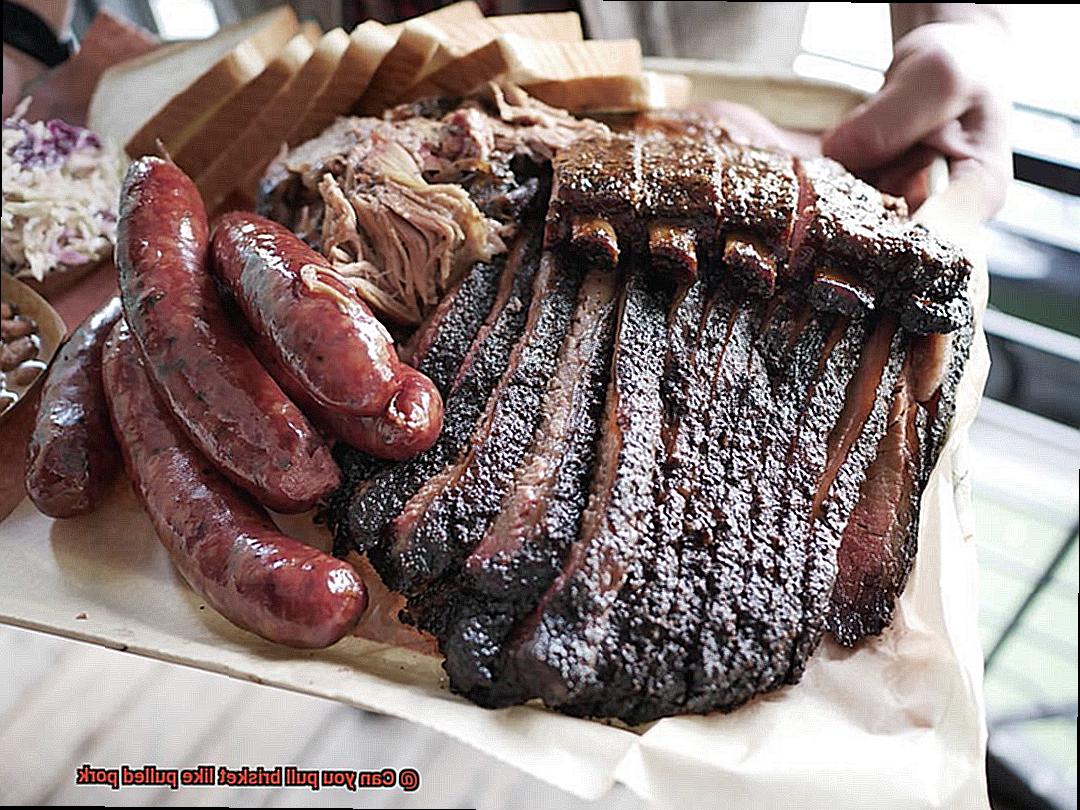
Techniques for Pulling Brisket Like Pulled Pork
Imagine the savory scent of slow-cooked meats wafting through the air at a backyard barbecue. As you stand before the grill, a question arises: should you stick with the classic pulled pork or embark on a culinary adventure with pulled brisket?
Brisket, renowned for its robust flavor and melt-in-your-mouth tenderness, may not be the obvious choice for pulling like pork. However, with the right techniques, it can rival any pulled pork dish in both taste and texture.
The secret to pulling brisket like pulled pork lies in the low and slow cooking method. By subjecting the brisket to a low temperature (around 225°F) for an extended duration (approximately 1 hour per pound), the collagen within the meat breaks down, resulting in a tender and effortlessly pullable texture.
Before cooking, don’t forget to apply a tantalizing dry rub or marinade to enhance the flavor profile and create a mouthwatering crust on the exterior. A harmonious blend of salt, pepper, paprika, garlic powder, and onion powder will leave your guests begging for seconds.
Once the brisket reaches perfection, allow it to rest. This critical step ensures that the succulent juices redistribute throughout the meat, guaranteeing a moist and delectable outcome. After resting for around 30 minutes to an hour, it’s time to pull.
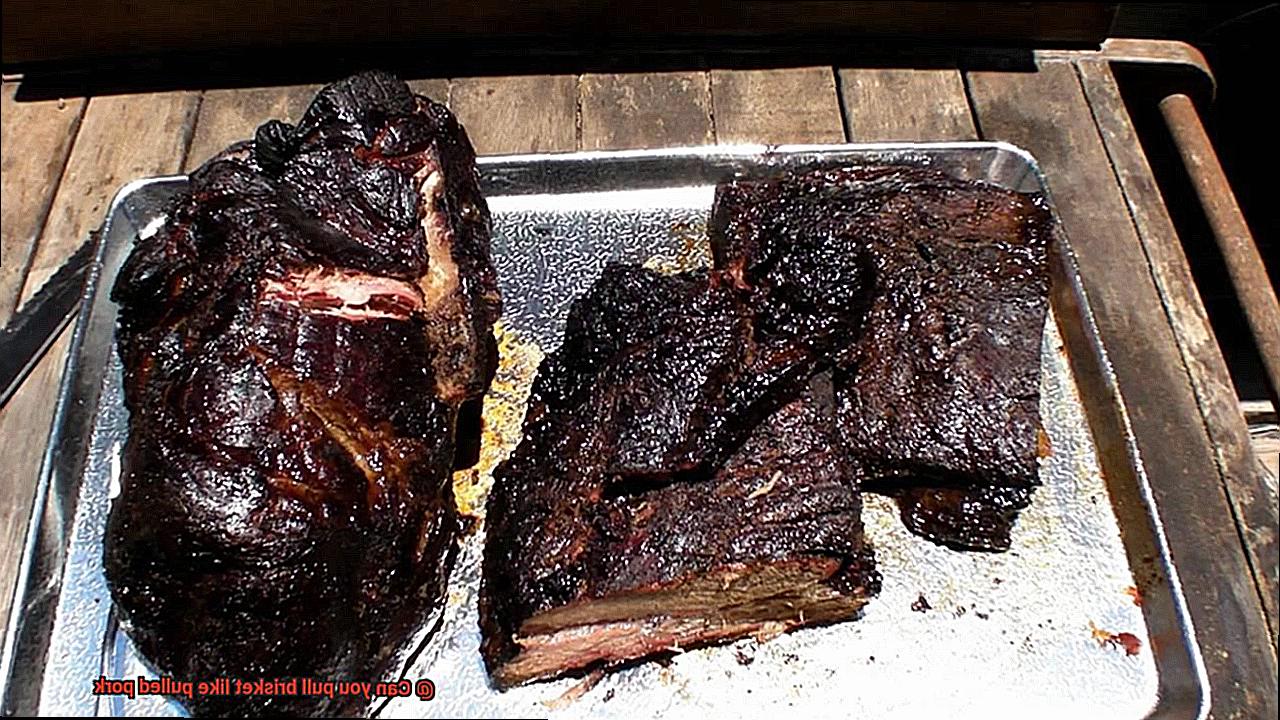
With two forks or your hands as your trusty tools, begin shredding the meat along the grain to achieve long strands. For an added touch of tenderness, continue pulling against the grain to create smaller pieces. If you desire an elevated flavor experience, mix in some barbecue sauce or other seasonings before or after pulling – personal preference reigns supreme.
It’s important to note that while brisket can be transformed into pulled goodness akin to pork, it retains its unique characteristics. Brisket is leaner than pork shoulder, so it may not possess the same juiciness or tenderness when pulled. Nonetheless, employing the right techniques and seasonings will yield a scrumptious and flavorful pulled brisket that keeps guests coming back for more.
The Texas Crutch Method
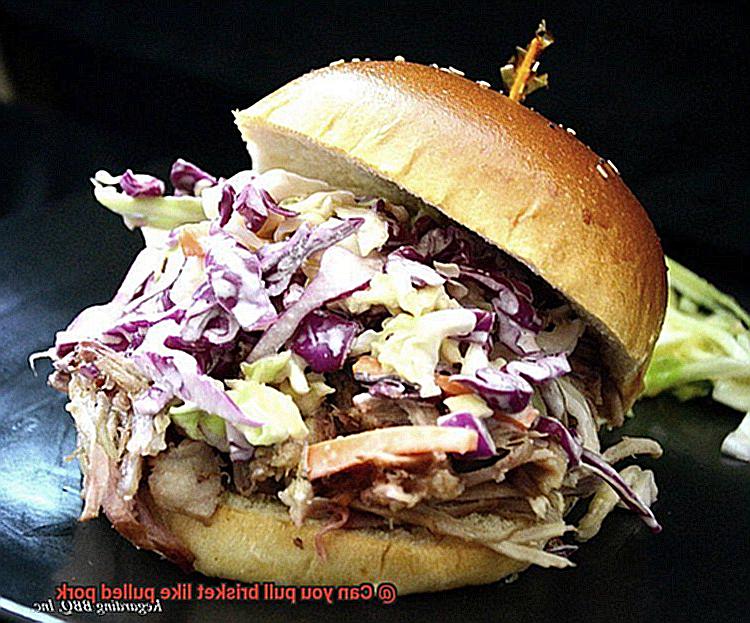
Look no further than the Texas Crutch Method—a technique that promises tender and juicy brisket rivaling classic pulled pork. In this article, we’ll dive into the details of this popular method, explore its effectiveness in producing mouthwatering results, and reveal how you can achieve barbecue perfection in your own backyard.
The Origin and Purpose of the Texas Crutch Method:
Originating in the barbecue capital of Texas, this method was developed to overcome the challenges of cooking a large and tough cut like brisket. With its ability to prevent drying out and speed up the cooking process, it has become a staple in achieving succulent results.
Step-by-Step Guide to Using the Texas Crutch Method:
Seasoning and Slow Cooking:
Choose your favorite rub or marinade to enhance flavor and impart complexity. Cook the brisket at a low temperature (around 225°F) for several hours. This slow cooking allows flavors to penetrate deeply while breaking down stubborn connective tissues.
Wrapping in Foil:
Once the brisket reaches an internal temperature of around 160°F, wrap it tightly in foil. This wrapping technique retains moisture, creating a steamy environment that speeds up cooking while infusing extra flavor and tenderness when liquid (e.g., beef broth or apple juice) is added.
Continued Cooking:
Place the wrapped brisket back on the grill or smoker, ensuring it remains tightly sealed. Cook until it reaches an internal temperature of 195°F to 205°F. At this point, the meat should be incredibly tender, effortlessly pulling apart.
The Great Debate: Traditional Smoking vs. Texas Crutch Method:
While some purists argue that it sacrifices smoky flavor, others swear by its effectiveness in producing moist and tender results. Ultimately, the choice between traditional smoking and the Texas Crutch Method comes down to personal preference.
Beyond Brisket: Applying the Texas Crutch Method to Other Cuts:
Don’t limit yourself to brisket alone—this technique can be applied to pork shoulder and ribs as well. Monitor internal temperature and adjust cooking time accordingly to achieve equally delectable results.
Internal Temperature to Achieve Tenderness
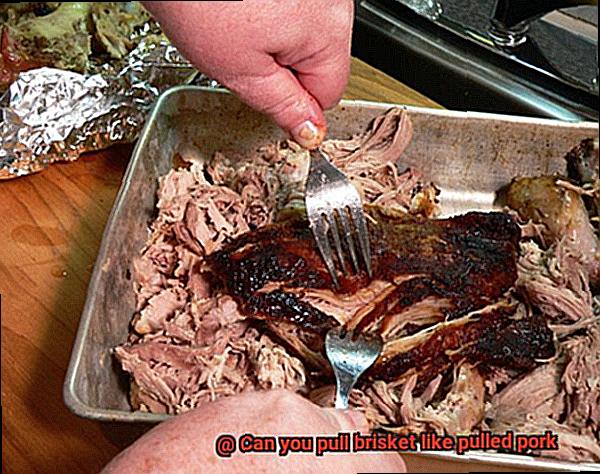
The world of barbecue is a tantalizing one, filled with the promise of succulent meat that practically melts in your mouth. But achieving that level of tenderness isn’t just a matter of throwing some meat on the grill and waiting.
The secret lies in the art of monitoring the internal temperature throughout the cooking process. In this article, we’ll take you on a journey through the intricacies of internal temperature, revealing how it affects tenderness and helping you create mouthwatering barbecue masterpieces.
The Magic Range for Pulled Pork:
Pulled pork lovers, rejoice. The ideal internal temperature range for achieving tender, fall-apart goodness is 195-205°F (90-96°C). Within this magical range, the collagen in the meat breaks down, resulting in that sublime texture that makes your taste buds sing.
But it doesn’t stop there – this temperature also causes connective tissues and fats to render out, infusing your pork with delicious flavor and moisture.
Brisket’s Temperature Sweet Spot:
Brisket aficionados know that reaching the perfect internal temperature is key to unlocking its legendary tenderness. Aim for a range of 200-205°F (93-96°C) to achieve brisket nirvana. With its higher fat content, brisket requires a bit more heat to break down the collagen completely. The reward? A culinary experience that transports you to barbecue heaven, as every bite dissolves into pure delight.
The Mighty Meat Thermometer:
To navigate this journey to tender perfection, you’ll need a trusty companion – a meat thermometer. This humble tool will be your guide, providing accurate readings of the meat’s internal temperature. Insert it into the thickest part of the meat, avoiding bones or fat that could skew the results. Let the thermometer be your secret weapon in the pursuit of succulent success.
The Dance of Temperature Checks:
As you embark on your barbecue adventure, remember to regularly check the internal temperature at various points of the meat. This dance of temperature checks ensures that your meat cooks evenly and achieves consistent tenderness throughout. Be vigilant, for even slight fluctuations can make or break your culinary masterpiece.
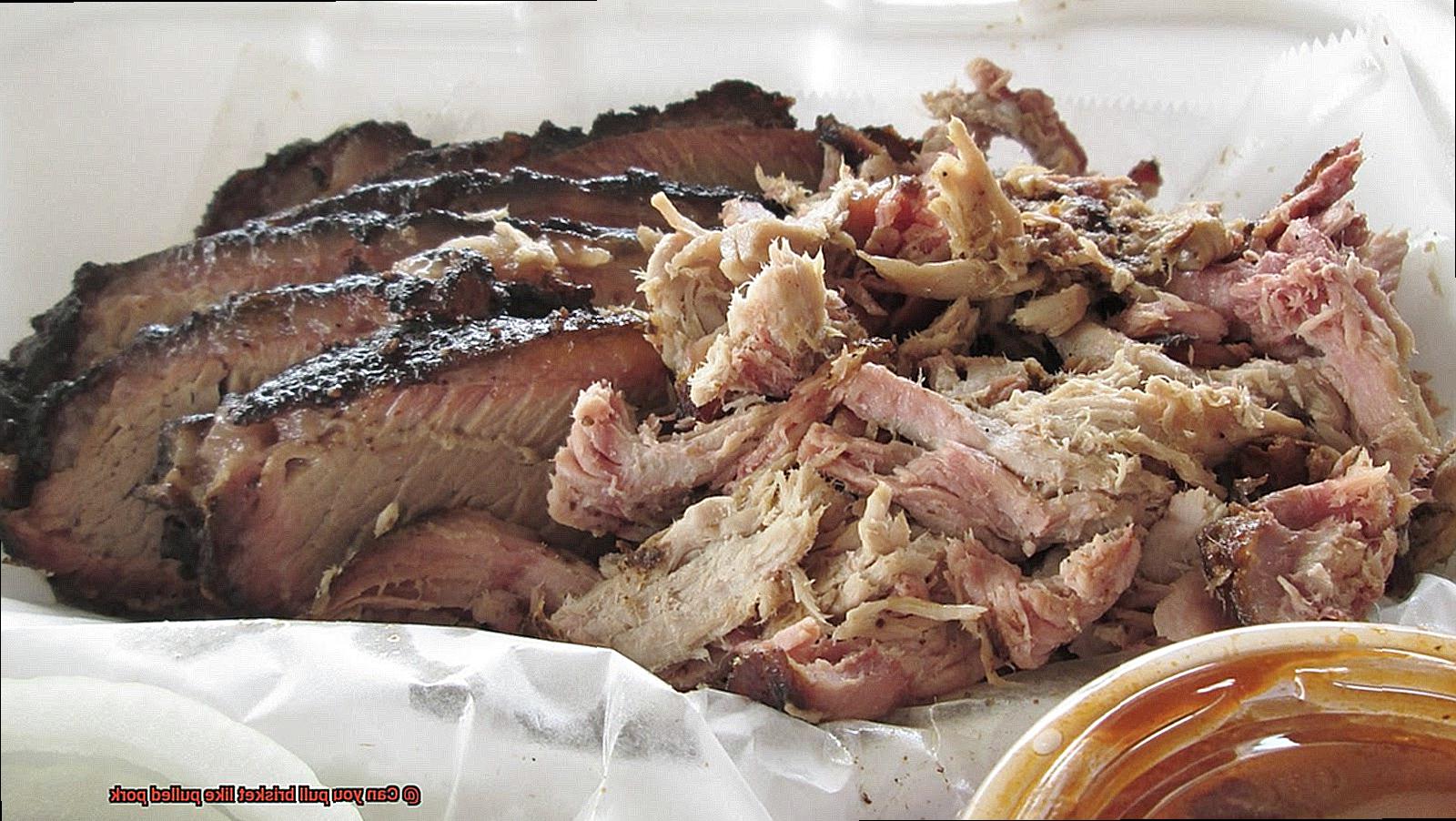
The Power of Resting:
Once your meat has reached its desired internal temperature, resist the temptation to devour it immediately. Give it time to rest, and you’ll be rewarded with a final product that surpasses all expectations. During this crucial resting period, the juices redistribute within the meat, resulting in enhanced flavor and moistness. Embrace this moment of anticipation, allowing your creation to bask in its own glory for at least 15-30 minutes – wrap it loosely in foil or keep it warm in a gentle oven to preserve its heat.

Shredding the Brisket
Shredding meat is a popular technique used to achieve that perfect texture in dishes like pulled pork. The process involves cooking the meat low and slow until it reaches a tender consistency that easily falls apart with a fork.
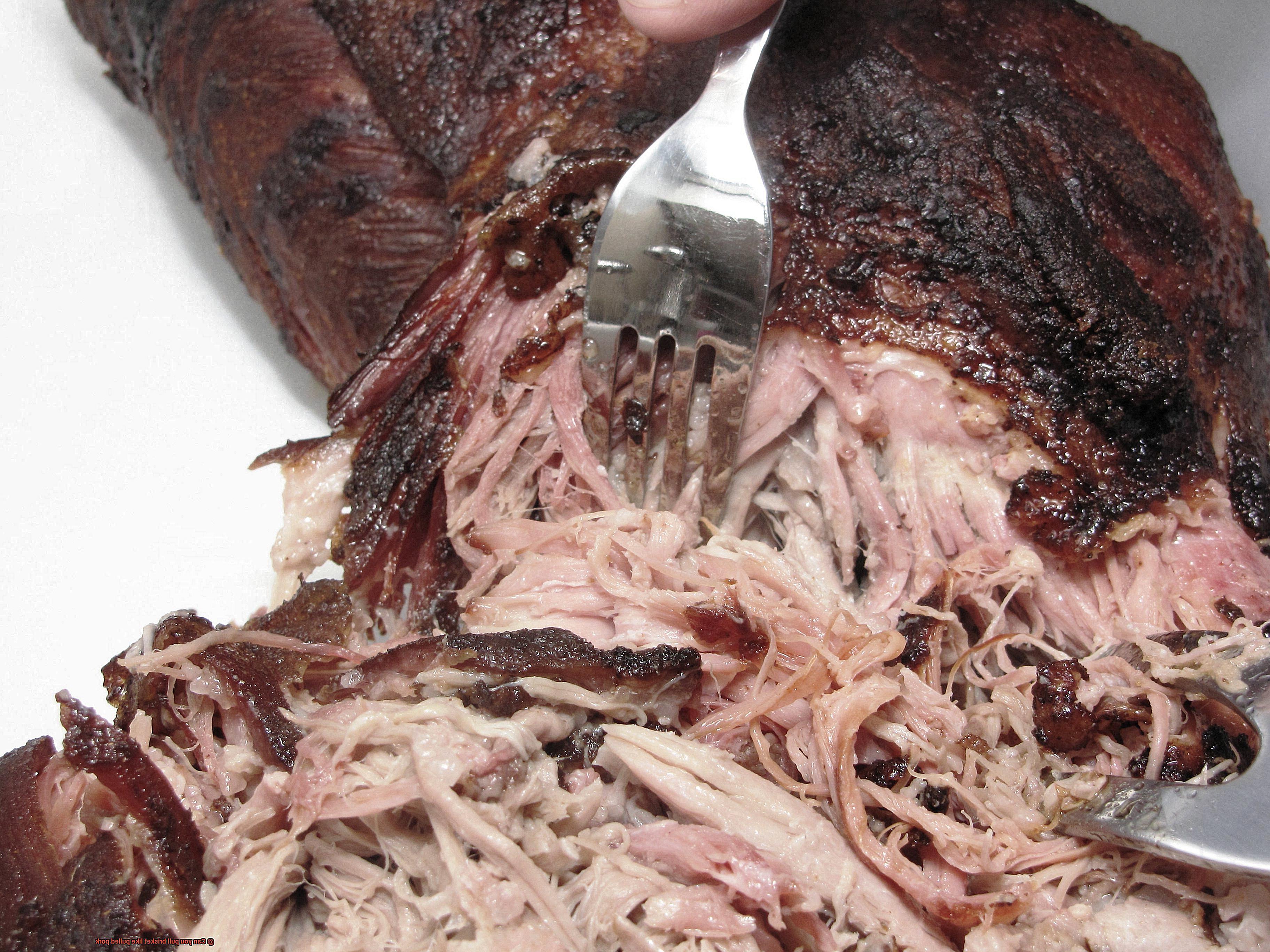
Traditionally, pulled pork is cooked to a temperature range of 195-205°F (90-96°C), allowing the collagen to break down and the meat to become succulent and juicy.
Now, let’s talk about brisket. Unlike pork, brisket is a tough cut of beef that requires more patience and skill to achieve that desired tenderness. With its higher fat content and tougher nature, brisket needs to be cooked low and slow until it reaches a temperature of around 200-205°F (93-96°C). This slow cooking process allows the collagen in the meat to break down, resulting in a moist and tender brisket.
While it is technically possible to shred brisket like pulled pork, it is not as common or traditional. In fact, brisket is usually sliced or chopped rather than shredded. Slicing the brisket allows for more even distribution of its natural juices, creating a mouthwatering experience with every bite. On the other hand, chopping the brisket adds texture and bite, adding a unique twist to your barbecue masterpiece.
If you’re determined to shred your brisket, grab two forks or some trusty meat claws and start pulling apart those meat fibers. However, keep in mind that shredding may not give you the same result as pulled pork. The texture might be slightly different, but experimenting in the kitchen is half the fun.
Slicing or chopping your brisket offers several benefits. Slicing ensures that every slice is packed with flavor and juiciness, making it perfect for sandwiches or serving as a main dish. Chopping adds more texture and bite, making it ideal for tacos or adding to a smoky chili.
It’s important to note that regional preferences may come into play here. Some people prefer their brisket shredded for a more tender experience, while others stick with the traditional slicing method. Ultimately, it all comes down to personal taste and what tickles your taste buds.
Enhancing the Flavor of the Shredded Brisket
Brisket is a beloved cut of meat that, when cooked to perfection, becomes a tender and flavorful delight. While traditionally sliced or chopped, shredding brisket offers a unique twist that can take your culinary adventure to new heights. In this guide, we’ll explore various techniques and ingredients to enhance the flavor of shredded brisket on your grill. From marinating and dry rubs to smoking with wood chips or chunks, basting with flavorful liquids, and tossing in a homemade barbecue sauce or glaze, get ready to elevate your grill game.
Marinating Magic:
Marinating the brisket before cooking is a game-changer when it comes to flavor enhancement. Experiment with marinades like a soy sauce and Worcestershire blend with garlic and spices, or keep it simple with olive oil, salt, and pepper. Allow the flavors to penetrate the meat for maximum impact.
Dry Rub Delight:
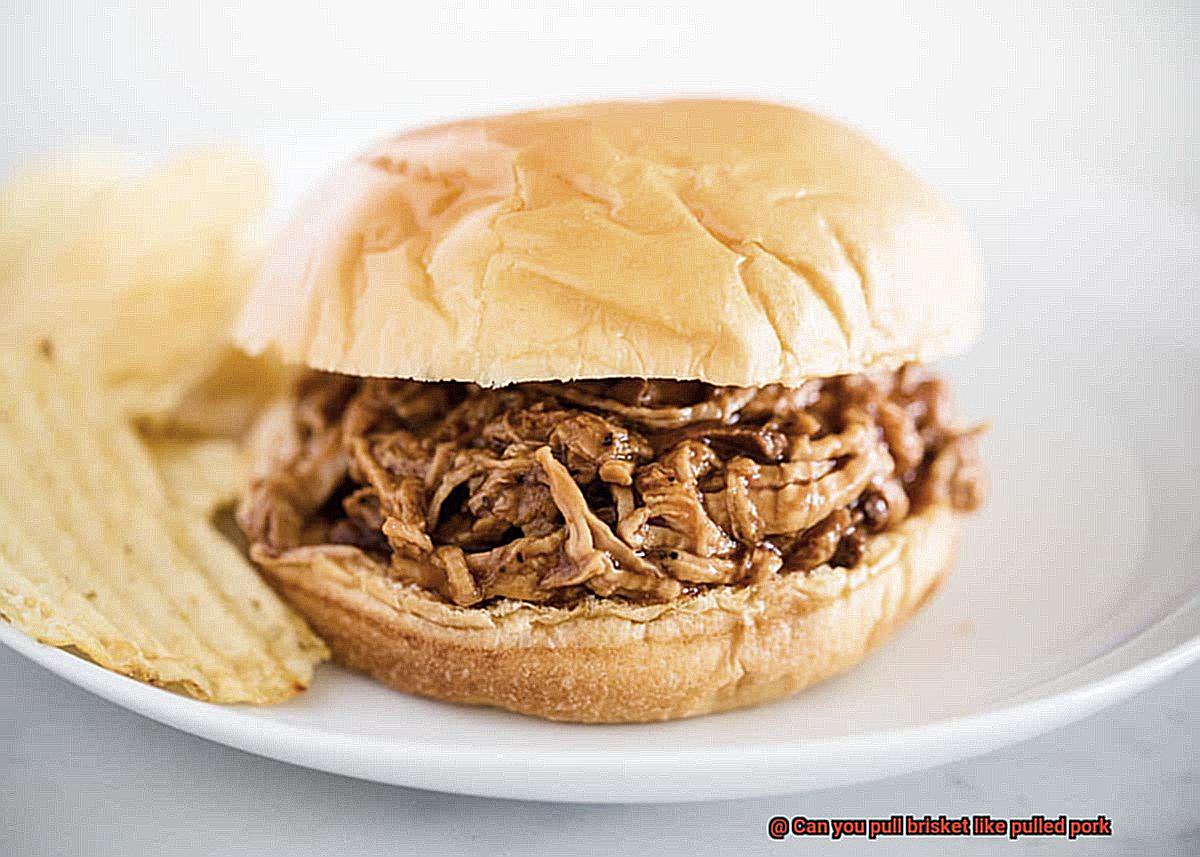
Create a tantalizing crust on the exterior of the meat by applying a generous dry rub. Opt for a blend of paprika, brown sugar, chili powder, cumin, and garlic powder. Let it sit for at least an hour before cooking to infuse the meat with aromatic goodness.
Smoky Sensation:
Take advantage of your smoker or grill by using wood chips or chunks for added flavor. Hickory wood imparts a smoky and slightly sweet taste, while mesquite offers a stronger and more intense smokiness. Explore different wood types to find your preferred flavor profile.
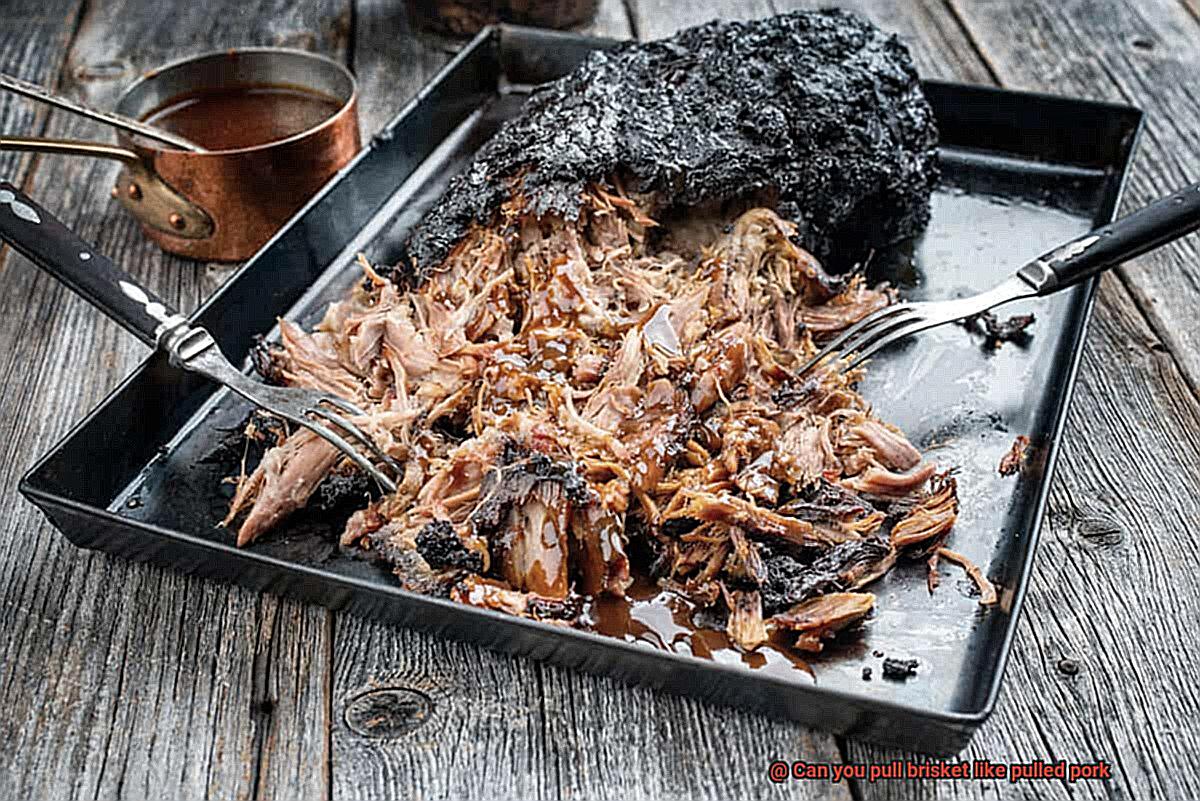
Baste Like a Boss:
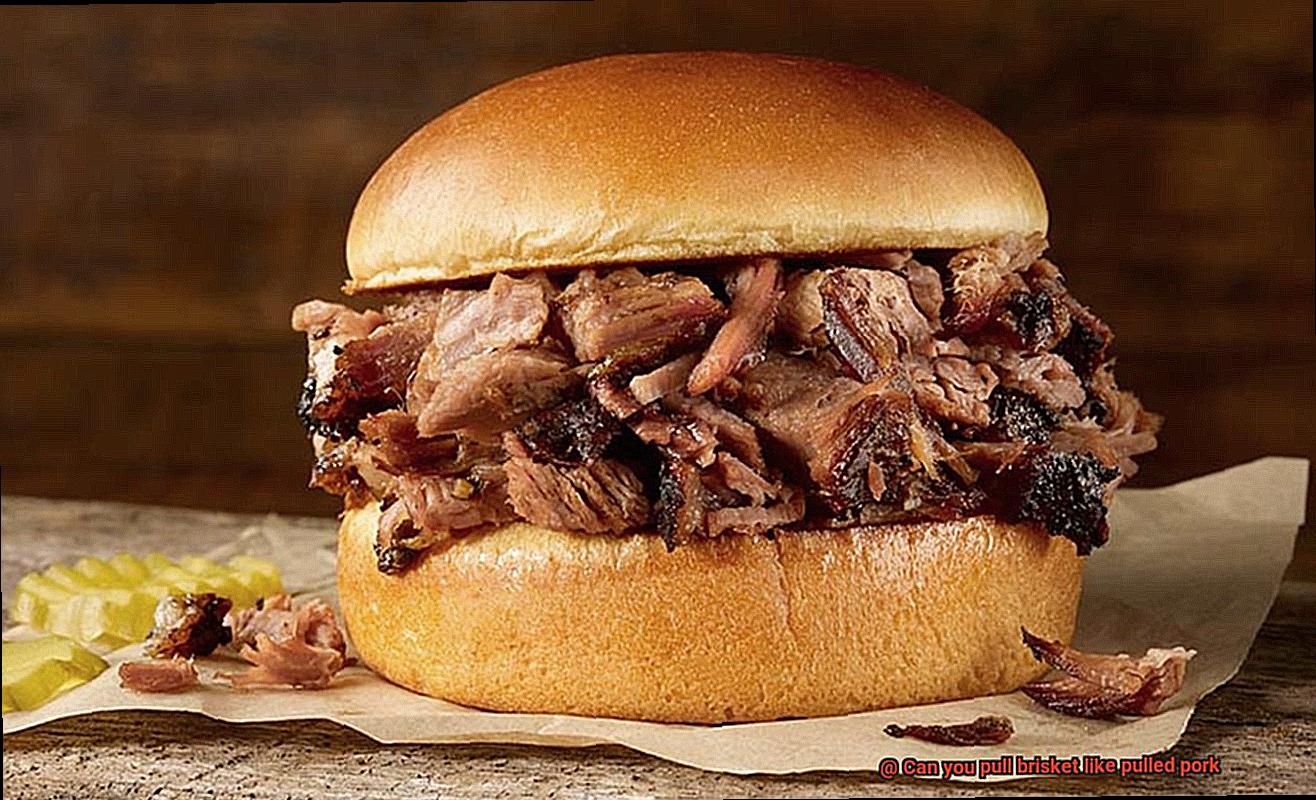
During the cooking process, basting the brisket with a flavorful liquid keeps it moist and intensifies the taste. Use a brush to apply a mixture of barbecue sauce, apple cider vinegar, and other seasonings every hour or so for maximum flavor infusion.
Sauce it Up:
Once the brisket is cooked and shredded, elevate its flavor with a homemade barbecue sauce or glaze. Whip up a tangy and savory sauce using ketchup, brown sugar, apple cider vinegar, Worcestershire sauce, garlic powder, and onion powder. Toss the shredded brisket in this luscious concoction before serving for a burst of irresistible flavor.
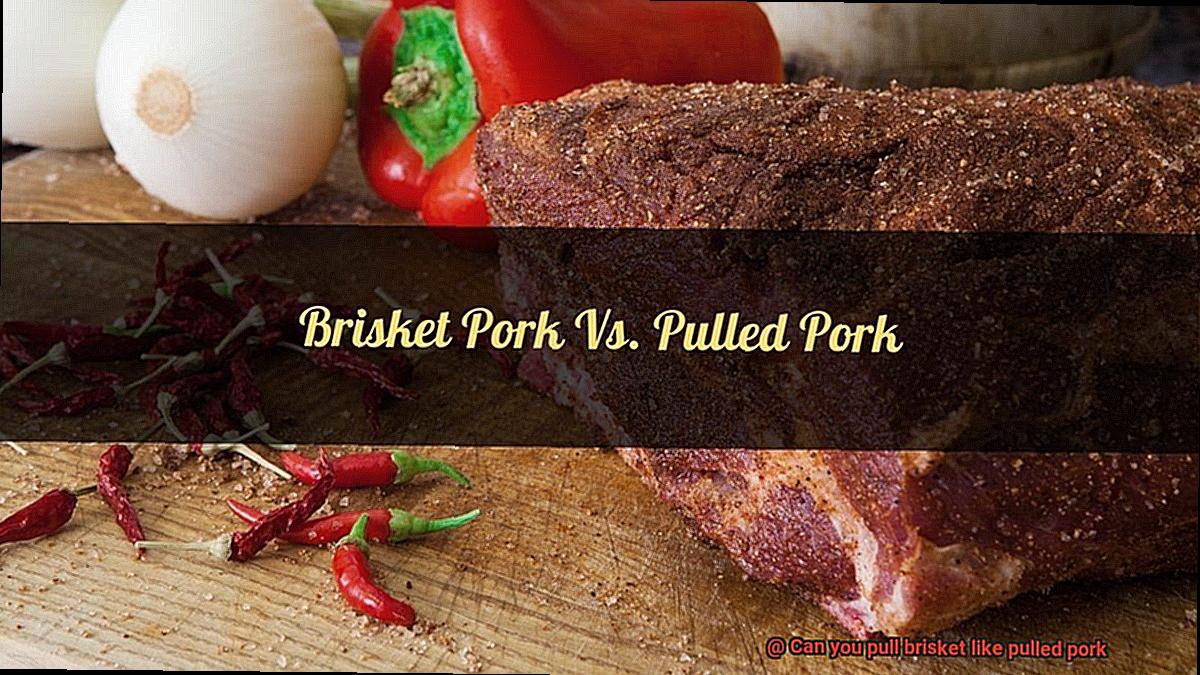
Experiment with Seasonings:
Don’t be afraid to get creative with your seasonings. Consider adding spices like cayenne pepper or smoked paprika to give your shredded brisket a spicy kick. You can also try incorporating herbs like rosemary or thyme for an aromatic twist.
Add Some Heat:
If you’re a fan of spicy flavors, consider adding some heat to your shredded brisket. Add a few dashes of hot sauce or sprinkle some red pepper flakes over the meat before cooking. This will give your dish an extra kick and add depth to the overall flavor profile.
mAEZI1mHVtM” >
Conclusion
When it comes to the question of whether you can pull brisket like pulled pork, the answer is a resounding yes.
Brisket, just like its porcine counterpart, can be transformed into tender and succulent shreds of meat that are perfect for sandwiches or tacos. The process involves slow-cooking the brisket until it reaches a melt-in-your-mouth texture that easily falls apart with a gentle tug.
The result is a tantalizing dish that combines smoky flavors with juicy tenderness.

